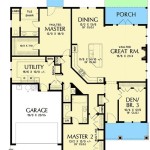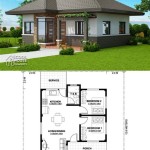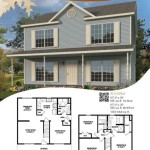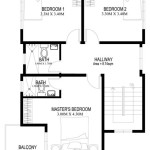Utilizing Apps to Design a House Floor Plan
Designing a house floor plan can be a complex undertaking, requiring careful consideration of spatial relationships, functionality, and aesthetic appeal. Traditionally, architects and designers relied on manual drafting techniques or specialized Computer-Aided Design (CAD) software. However, the advent of mobile technology has brought forth a plethora of applications designed to simplify and democratize the floor plan creation process. These apps cater to a wide range of users, from homeowners planning renovations to professional architects seeking a convenient tool for initial design concepts. This article explores the capabilities and benefits of using apps to design a house floor plan, highlighting key features and considerations for selecting the right application.
The appeal of floor plan design apps lies in their accessibility and ease of use. Unlike complex CAD software, many of these apps feature intuitive interfaces and drag-and-drop functionality, allowing users to create basic floor plans with minimal training. This accessibility lowers the barrier to entry for individuals without formal architectural training, empowering them to visualize and experiment with different design options. Furthermore, mobile apps offer the flexibility to work on floor plans anytime, anywhere, using a smartphone or tablet.
Key Features and Functionalities of Floor Plan Design Apps
A comprehensive floor plan design app typically includes a range of features designed to streamline the design process. Understanding these features is crucial for selecting an app that meets the specific needs of a project.
One primary feature is the ability to draw walls and define room dimensions. Most apps provide tools for creating straight walls, curved walls, and angled walls, allowing for the creation of complex floor plan layouts. Precise dimensioning is essential, and apps usually provide options for inputting wall lengths and angles directly, ensuring accuracy in the design. The ability to easily adjust and modify wall positions and dimensions is also crucial for iterative design refinement.
Another essential feature is a library of pre-designed objects and furniture. This library typically includes items such as doors, windows, furniture pieces, appliances, and fixtures. Users can drag and drop these objects onto the floor plan to represent the placement of real-world elements. The ability to customize the dimensions and appearance of these objects is also important, allowing users to accurately represent specific items in their design.
Visualization and rendering capabilities are also highly valuable. Some apps offer the ability to generate 2D and 3D visualizations of the floor plan, providing a more realistic representation of the space. This can be particularly helpful for visualizing the flow of traffic, assessing spatial relationships, and identifying potential design flaws. Some apps even offer augmented reality (AR) features, allowing users to overlay the floor plan onto a real-world space using their device's camera.
Collaboration features are also increasingly common. These features allow multiple users to work on the same floor plan simultaneously, facilitating collaboration between homeowners, designers, and contractors. Collaboration tools may include features such as shared access, commenting, and version control.
Finally, the ability to export floor plans in various formats is critical for sharing and further developing the design. Common export formats include PDF, DWG (AutoCAD drawing file), and image files (JPEG, PNG). The ability to export in a standard CAD format allows for seamless integration with professional design software for more detailed design and documentation.
Benefits of Using Apps for Floor Plan Design
The use of apps for floor plan design offers numerous benefits compared to traditional methods or complex CAD software. These benefits stem from the inherent accessibility, ease of use, and collaborative possibilities offered by mobile technology.
One significant benefit is the cost-effectiveness. Many floor plan design apps are available for free or at a relatively low cost compared to professional design software. This makes them an attractive option for homeowners and individuals on a budget who want to explore design options without incurring significant expenses. Even paid apps often offer a free trial period, allowing users to test the software before committing to a purchase.
Time efficiency is another important advantage. The intuitive interfaces and drag-and-drop functionality of floor plan design apps significantly reduce the time required to create a basic floor plan. This allows users to quickly experiment with different layouts and visualize potential design solutions. The ability to work on floor plans on the go also contributes to time efficiency, as users can utilize downtime to refine their designs.
Improved communication is another key benefit. The ability to easily generate 2D and 3D visualizations of the floor plan facilitates communication between homeowners, designers, and contractors. Visual representations of the design can help to clarify design intent and prevent misunderstandings. The collaboration features offered by some apps also improve communication by allowing multiple users to work on the same floor plan simultaneously and provide feedback directly within the app.
Enhanced design exploration is also facilitated by the use of floor plan design apps. The ease of use and accessibility of these apps encourage users to experiment with different layouts and design options. The ability to quickly modify the design and visualize the results allows for a more iterative and creative design process. This can lead to the discovery of design solutions that might not have been considered using traditional methods.
Finally, the use of apps can empower homeowners to take a more active role in the design process. By providing access to user-friendly design tools, these apps allow homeowners to translate their ideas and preferences into a tangible floor plan. This can lead to a more personalized and satisfying design outcome, as the homeowner feels more involved and invested in the process.
Considerations When Choosing a Floor Plan Design App
Selecting the right floor plan design app requires careful consideration of several factors, including the user's specific needs, technical expertise, and budget. While the abundance of available options can be overwhelming, focusing on key features and functionalities can help to narrow down the choices.
One important consideration is the user's level of experience. For users with limited design experience, an app with a simple and intuitive interface is essential. Look for apps that feature drag-and-drop functionality, clear instructions, and helpful tutorials. More experienced users may prefer apps with more advanced features and customization options.
The specific features and functionalities required for the project are also crucial. Consider the complexity of the floor plan, the level of detail required, and the need for visualization and collaboration features. If the project involves complex layouts or requires precise measurements, an app with advanced drawing tools and dimensioning capabilities is necessary. If visualization is important, look for an app that offers 2D and 3D rendering capabilities.
The compatibility of the app with existing design software and file formats is another important consideration. If the floor plan needs to be integrated with professional design software, ensure that the app can export in a compatible format, such as DWG or DXF. Also, consider the compatibility of the app with different operating systems (iOS, Android) and devices (smartphones, tablets).
The cost of the app is also a factor. While many free apps are available, they may have limited features or include advertisements. Paid apps typically offer more comprehensive features and a better user experience. Consider the budget for the project and choose an app that offers the best value for money. Look for apps that offer a free trial period to test the software before committing to a purchase.
User reviews and ratings can provide valuable insights into the usability and reliability of different apps. Read reviews from other users to get a sense of the app's strengths and weaknesses. Also, consider the app developer's reputation and track record. Look for developers who are known for providing regular updates and good customer support.
Finally, consider the learning curve associated with the app. Some apps may require more time and effort to learn than others. Look for apps that offer comprehensive documentation, tutorials, and customer support. A steep learning curve can be a deterrent, especially for users with limited time or experience.
By carefully considering these factors, users can select a floor plan design app that meets their specific needs and helps them to create accurate, functional, and aesthetically pleasing floor plans.

Best Apps For Home Design

Best House Design App Top 10 Options For 2025 Cedreo

Roomsketcher Floor Plan Home Design App
Smart Home Design Floor Plan Apps On Google Play

Free Floor Plan Creator Design 2d 3d Layouts Easily

Free Floor Plan Creator Design 2d 3d Layouts Easily

5 Awesome Apps To Help You Plan Your Home S Interior The House Designers

Free House Design Home And Plans

Free Floor Plan Creator Design 2d 3d Layouts Easily

The Best Home Design Mobile Apps Procompare Co Za
Related Posts








